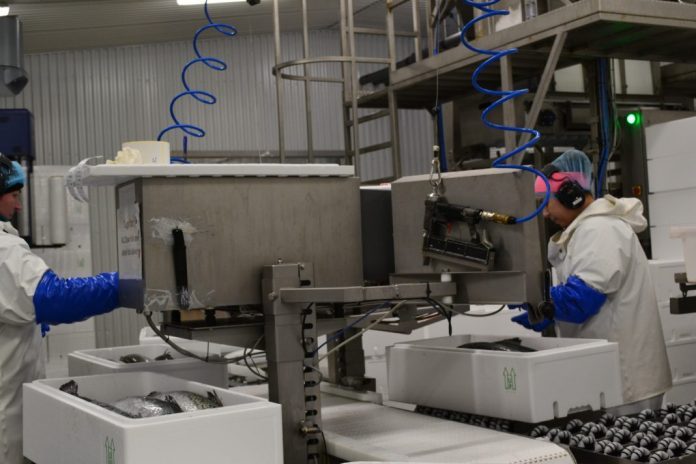Arnarlax CEO, Kristian Matthiasson, has big plans for his country and salmon farming’s bold new frontier.
In 2017 Arnarlax produced 10,000 tonnes of salmon. This year harvest volume for the Icelandic producer will be 6,000 tonnes. That’s way under capacity of the company’s production license for 22,700 tonnes.
“We’re nowhere near making the most of the capacity we already have. Considerable growth is still possible, bearing in mind the production licenses that have been awarded, and capacities for sustainability that exist on Iceland,” Matthiason told SalmonBusiness when we visited Arnarlax’s head office at Bíldudalur.

But according to Matthiasson, things can change – rapidly.
“This year will see the biggest release of smolt in Iceland’s history, if you look at the combined total for the country’s four aquaculture companies (Arnarlax, Arctic Fish, Ice Fish Farm and Laxar). Consequently, this release will be the means by which to produce 30,000-40,000 tonnes of salmon in Icelandic waters over the next 24 months,” Matthiasson said.
– A huge step for us
Increased production, also means new logistical challenges in the future.
– How do you deal with the logistics?
“I knew you would ask that,” Matthiasson replied and continued;
“We use trucks to transport the fish to Reykjavik. That’s naturally quite a challenge in winter. But as from November, in accordance with an agreement with one of the major freight transport companies on Iceland, Samskip, we will commence weekly sailings from here at Bíldudalur.

The fish will sail from Bildudalur to Reykjavik, before being transported on to Rotterdam.
“It’ll be a huge step for us,” said Matthiason, adding that the challenge on the transport side lies in the distance from the markets.
“The principal market is the United States, but we export a considerable volume to Europe. You would think the USA would be ideal for Iceland, in that we are relatively close to each other. But the infrastructure for air cargo from Iceland isn’t particularly good. Space in aircraft holds is limited, and sending goods by air is extremely expensive. That leaves the option of shipping the fish to the Continent, sell them in Europe or send them by air from Europe to the United States. It’s not the ideal transport solution, but we’re not complaining. We’re not that much worse off in terms of transport than what Bakkafrost on the Faroe Islands has to contend with,” said Matthiasson.
– But as from November, how much salmon will then be trucked and how much will be shipped?
“Time will tell. Shipping gives us the chance to allocate a significant proportion of production from Monday, Tuesday and Wednesday for loading on board the ship. There will be considerably less volume sent by truck. Exactly how much, I don’t rightly know just now.”

Eager for speedy feed deliveries
Delivery of feed also poses a logistic challenge. The feed is supplied from Norway.
“The infrastructure around feed is inferior. Getting speedy deliveries is the challenge. To keep transport costs down to an acceptable level, we have to take large quantities of feed per delivery. We currently store the feed on shore, to then transport it out to the barges. We are keen to discontinue that practice in the future. We are looking to have feed delivered once or twice a week, to facilitate planning,” said Matthiasson, before adding that this will happen as soon as production volume is increased.

